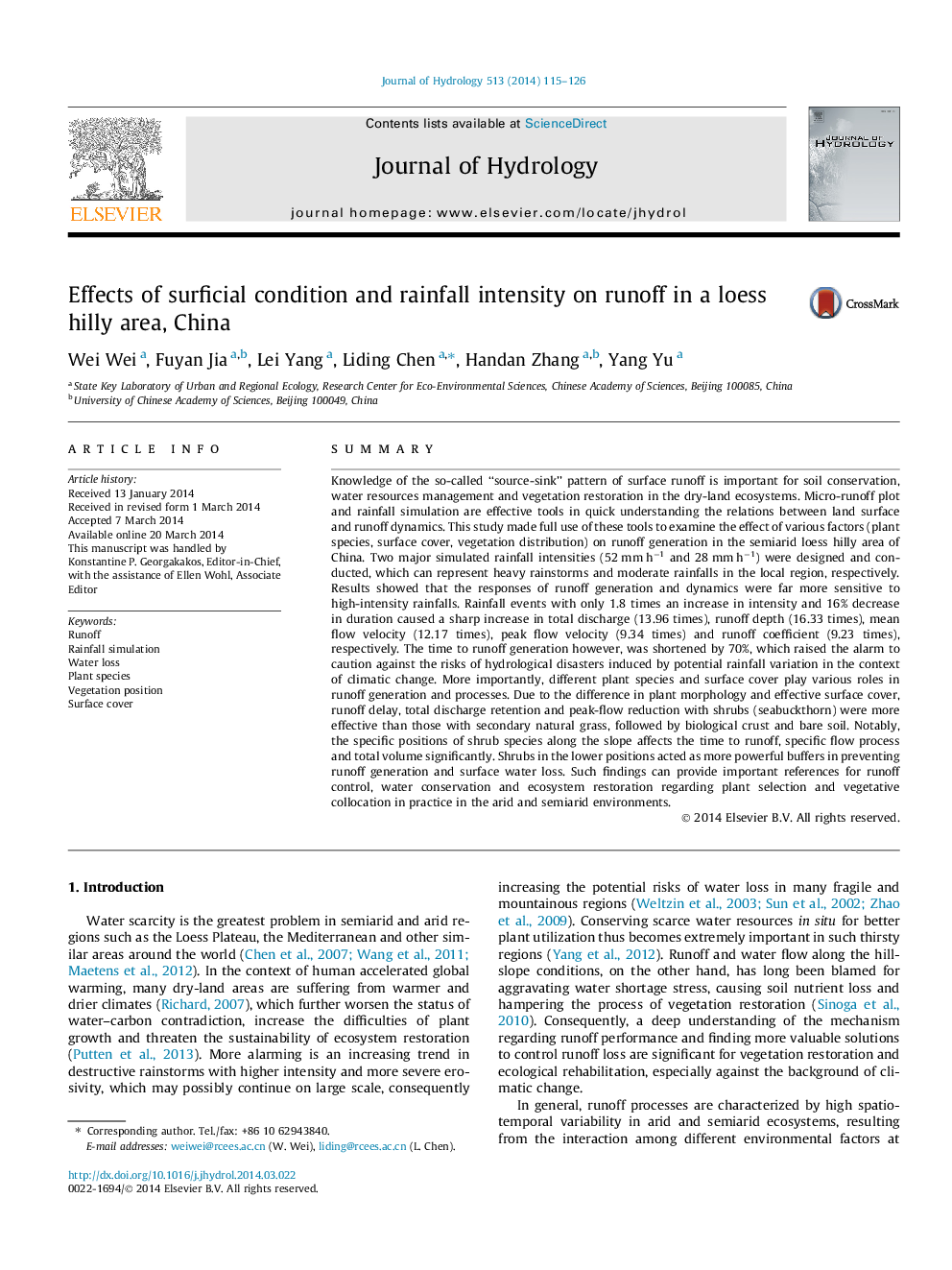| کد مقاله | کد نشریه | سال انتشار | مقاله انگلیسی | نسخه تمام متن |
|---|---|---|---|---|
| 6412719 | 1629935 | 2014 | 12 صفحه PDF | دانلود رایگان |
- Runoff is far more sensitive to high-intensity rainfalls.
- Different plant species and surface cover play different roles in runoff.
- Seabuckthorn shrub is more effective than grass, followed by BSCs and bare soil.
- The role of shrub position along the slope is significant in runoff reduction.
- Shrubs in the lower position act as more powerful role in preventing runoff loss.
SummaryKnowledge of the so-called “source-sink” pattern of surface runoff is important for soil conservation, water resources management and vegetation restoration in the dry-land ecosystems. Micro-runoff plot and rainfall simulation are effective tools in quick understanding the relations between land surface and runoff dynamics. This study made full use of these tools to examine the effect of various factors (plant species, surface cover, vegetation distribution) on runoff generation in the semiarid loess hilly area of China. Two major simulated rainfall intensities (52 mm hâ1 and 28 mm hâ1) were designed and conducted, which can represent heavy rainstorms and moderate rainfalls in the local region, respectively. Results showed that the responses of runoff generation and dynamics were far more sensitive to high-intensity rainfalls. Rainfall events with only 1.8 times an increase in intensity and 16% decrease in duration caused a sharp increase in total discharge (13.96 times), runoff depth (16.33 times), mean flow velocity (12.17 times), peak flow velocity (9.34 times) and runoff coefficient (9.23 times), respectively. The time to runoff generation however, was shortened by 70%, which raised the alarm to caution against the risks of hydrological disasters induced by potential rainfall variation in the context of climatic change. More importantly, different plant species and surface cover play various roles in runoff generation and processes. Due to the difference in plant morphology and effective surface cover, runoff delay, total discharge retention and peak-flow reduction with shrubs (seabuckthorn) were more effective than those with secondary natural grass, followed by biological crust and bare soil. Notably, the specific positions of shrub species along the slope affects the time to runoff, specific flow process and total volume significantly. Shrubs in the lower positions acted as more powerful buffers in preventing runoff generation and surface water loss. Such findings can provide important references for runoff control, water conservation and ecosystem restoration regarding plant selection and vegetative collocation in practice in the arid and semiarid environments.
Journal: Journal of Hydrology - Volume 513, 26 May 2014, Pages 115-126
